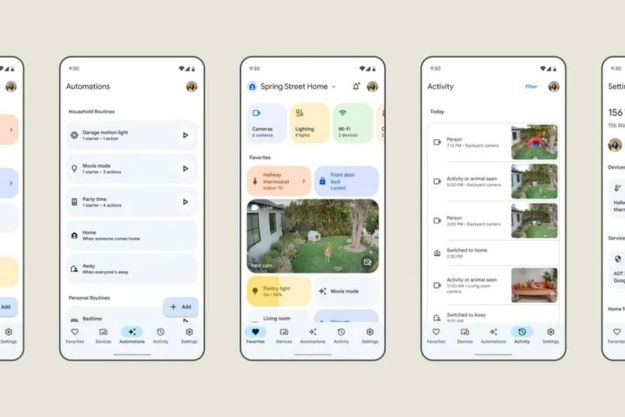Update: Digital Trends got a chance to check out this new device for ourselves. Take a look at our Nest Home Mini hands-on review for more details.
Google announced the Nest Mini, an upgraded version of the Google Home Mini, at Tuesday’s Made By Google 2019 event, confirming the existence of the long-rumored smart speaker and showing off everything that makes it so exciting. The October 15 event has also dropped news of Google Stadia, Pixel Buds 2, Nest Wifi, and of course, the newest Pixel 4 smartphone.
The announcement confirmed leaked details — including that not much has changed on the front in terms of appearance. The Nest Mini looks a lot like the Google Home Mini, except that the bottom color now matches the top. You can say goodbye to the bright orange casing in favor of a more subtle look. This new look and feel may affect your decision when choosing between the Amazon Echo and Nest Home Mini.
The underside now has a hanging groove that makes it easy to hook the Nest Mini on the wall — no special mount required. If you’re a fan of the orange flair, don’t worry — it’s still present as an accent color for the hanging groove. The cable is around 5 feet long, and there are four color options: the original charcoal, chalk, and coral, along with the new sky blue.

But don’t think the Nest Mini involves nothing more than aesthetic changes; the specs have seen a significant upgrade, too. The Nest Mini uses a 15-watt power supply versus the 9-watt power supply used by the
The Nest Mini has double the bass of the original
Some things remain the same, though. The physical microphone mute switch is still present on the side of the smart assistant, as are the four “listening” lights on top.
Perhaps the most important change of all, however, is that the Nest Mini is part of Google’s commitment to use recycled and sustainable materials. All plastic in the Nest Minis will be made of 100% recycled bottles.
This is a breaking news story and will be updated with the latest information.
Editors' Recommendations
- A new Google Pixel 8a leak just revealed three huge upgrades
- Google rolls out new Nest Cam features to Google Home for web
- The most common Google Nest Mini problems and how to fix them
- Nest Secure will be discontinued in April – prepare your smart home with these steps
- Google Home adds new camera features and support for Nest Cam Outdoor




